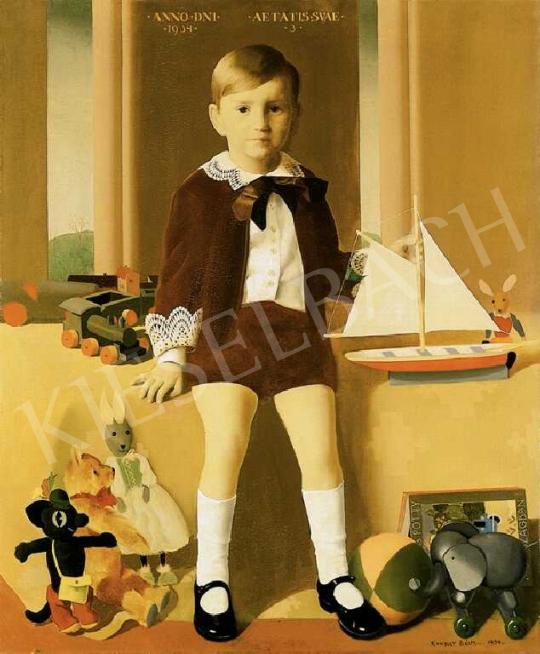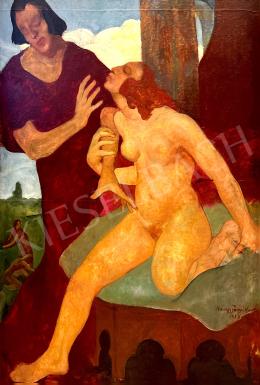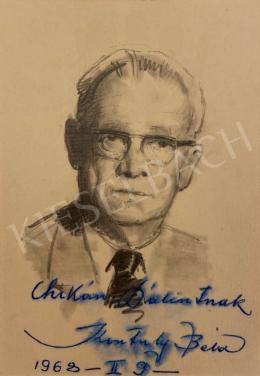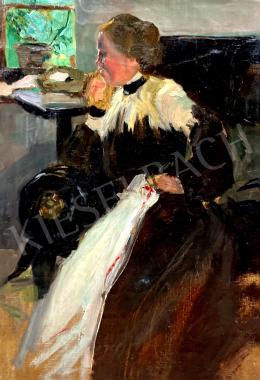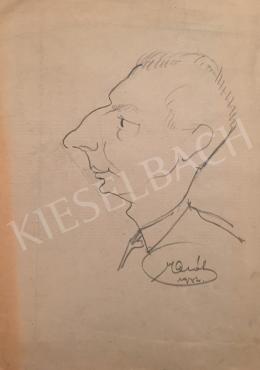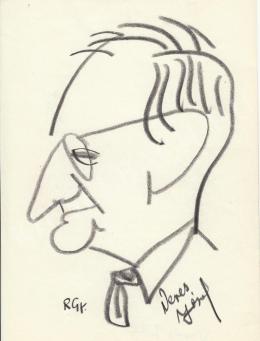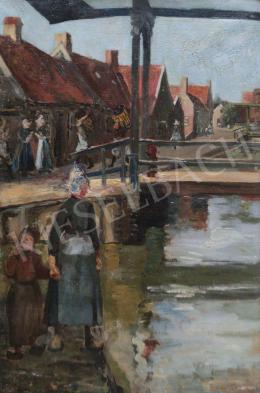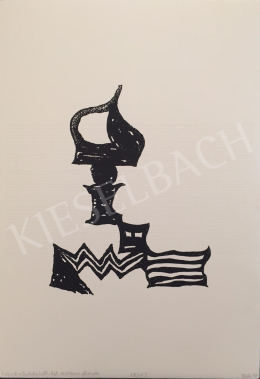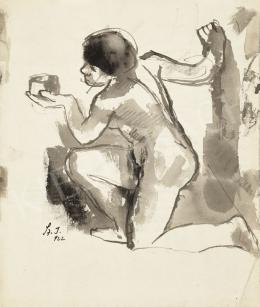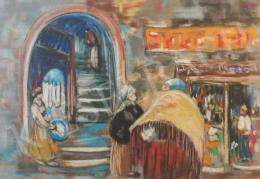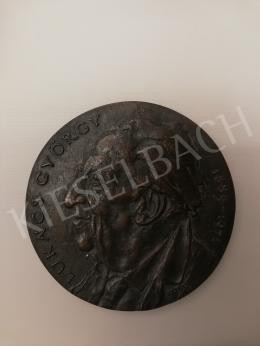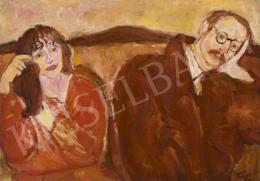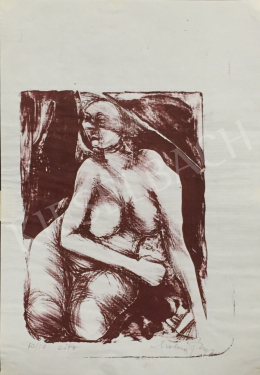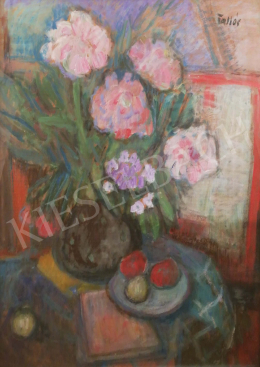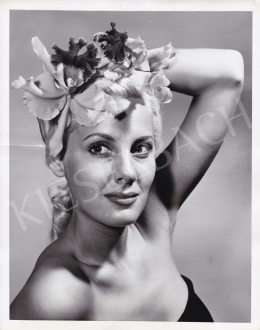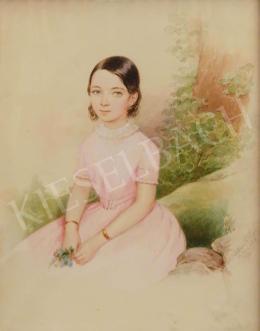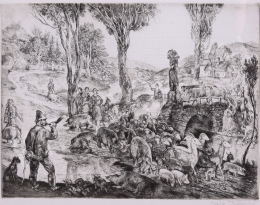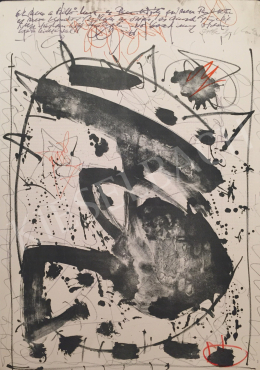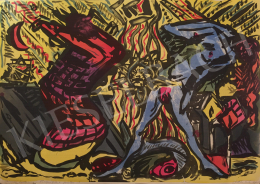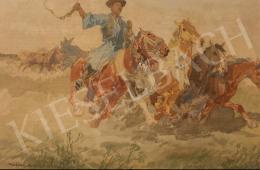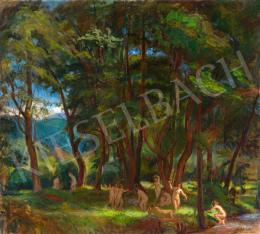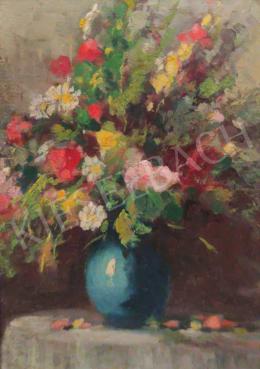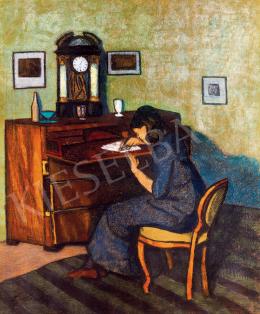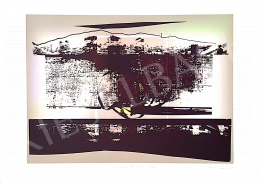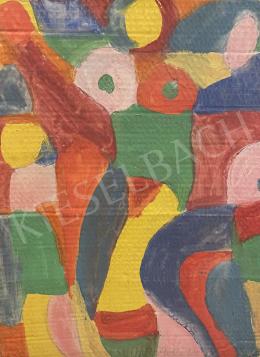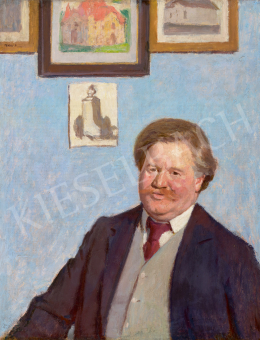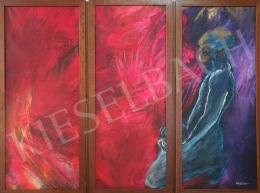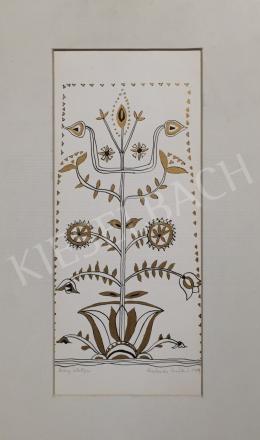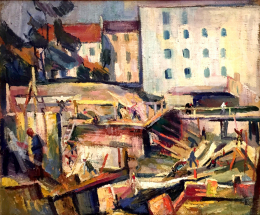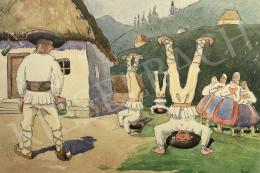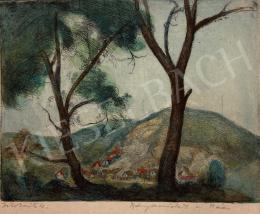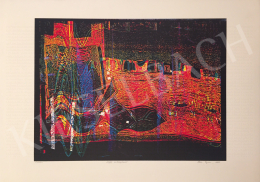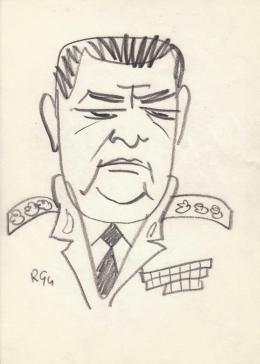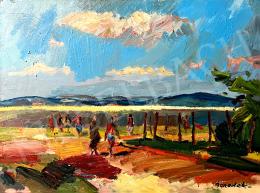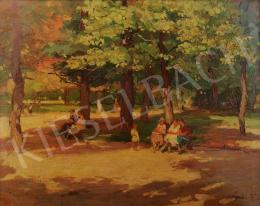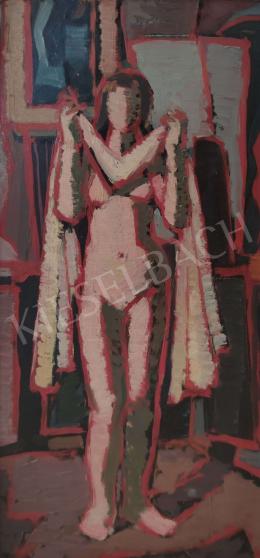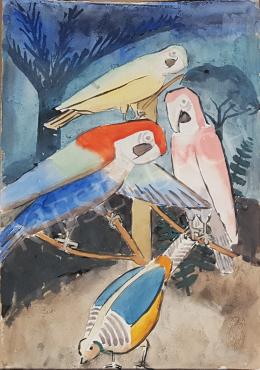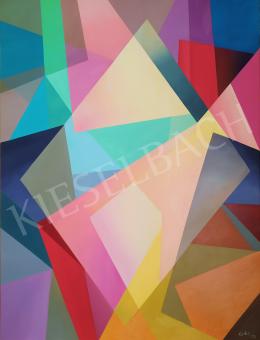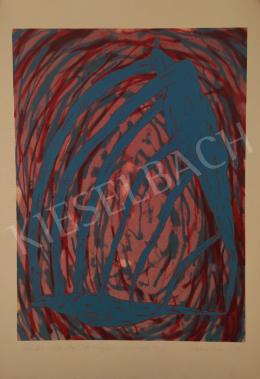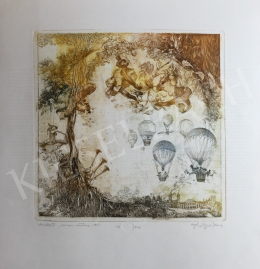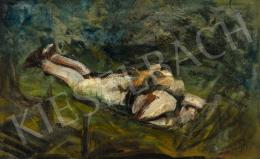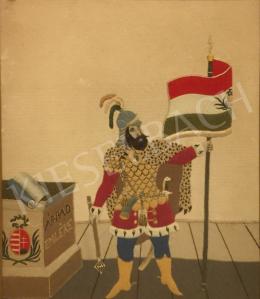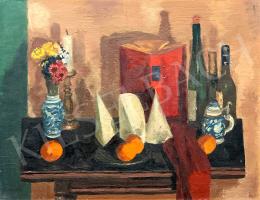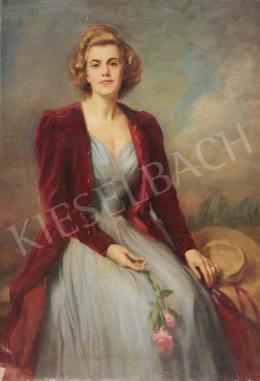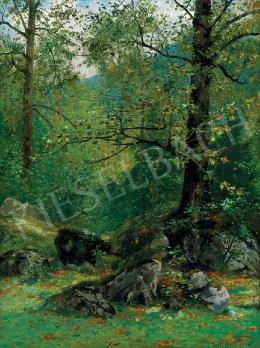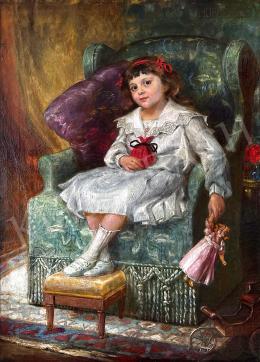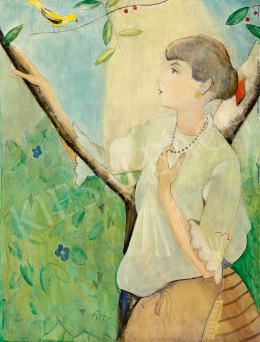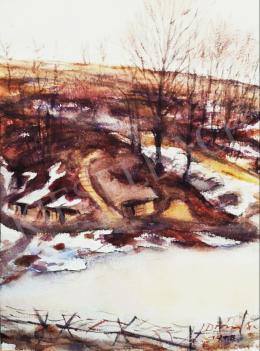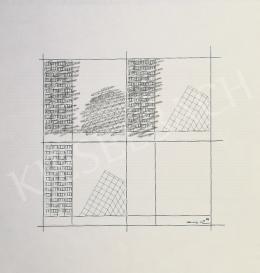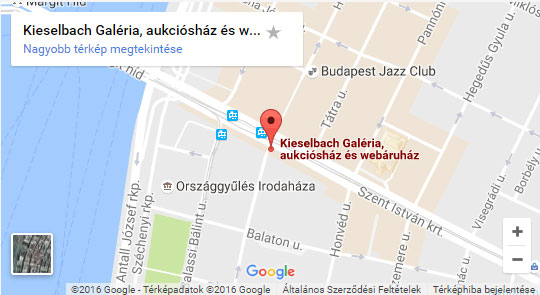On exhibit:
III. National Fine Art Exhibition, Macrh 24 through May 15, 1935, Műcsarnok. Archive # 12.1.
Reproduced:
Sunday edition of New Hungarians, April 7, 1935
Julianna P. Szűcs: The Roman school, Budapest, 1987. Picture no. 130
Literature:
András Zwikl: Kontuly Béla (born in Miskolc in 1904 - died in Budapest in 1983) in: Life-works discovered and about to be discovered. Conference 1995. Szombathely Gallery, Szombathely, 1998.
Julianna P. Szűcs: The Roman school, Budapest, 1987.
Analogy:
Ernst Nepo: Family portrait, 1929. Oil on canvas, dimensions 146 x 115 cm. Innsbruck, Tiroler Landesmuseum Ferdinandeum.
Recently, mainly since the exhibition of the Szombathely Gallery in 1992 featuring Hungarian post-expressionist artists, the works of Béla Kontuly attract the increasing attention of both art historians and auction-goers. This is an obvious effect of the interest sparked by the discovery of the previously undeservedly neglected neo-classical trend of the Hungarian painting between the two world wars. The works of Kontuly represent this clear and coolly elegant trend in painting perfectly. His paintings not only reveal the influence of the Italian impulse of that period, mainly that of Felice Casorati and Ubaldo Oppi, but they can also be likened to several pieces of the German new objective painting.
By the twenties, the European art has concluded the period of formal innovations and experiments with new forms of artistic expression aimed to supersede traditional frameworks. Time has come to calm down. The traditional painting values have regained their former status, the message to be conveyed, the masterliness, the sophisticated and completed composition have once more become important and indicative of quality. The sober, strict and descriptive forms coupled with clear-cut, sharp contours are common characteristics of the painters of the said period, who belonged to the Art Deco, Novecento Italiano or Neue Sachlichkeit depending on the geographic location of their respective nations. The artist have turned their attention to the problem of redefining the portrayal of human form with a zeal never seen before.
The favorite and ubiquitous genre of the period was the portrait, specially the portrayal of children. The subjects of such paintings, children with distant and wistful eyes, normally appear amidst their toys. The painting under scrutiny represents the neo-classical trend of the period exquisitely not only in the election of the subject but also with respect to its composition, colouration, form depiction and characteristics of the painter's style. The frontal setting and the composition of the picture conveys stability and well-founded security as opposed to uncertainty. Its creator has avoided eventful and dynamic solutions, the elements of the picture emphasize horizontal and vertical directions rather than the diagonals. The contour of the boy, the architectural elements of the background and the two narrow streaks of landscapes appearing in between mark the vertical direction while their parallels convey the feel of order. Kontuly has often employed this conspicuous technique of placing a neutral homogenous plane (drapery or architectural detail) behind the depicted figure and dividing space adjacent to it in one or two narrow streaks towards the external world. This composition scheme can also be found in his Proletarian girl made in 1930, now part of the Kieselbach collection as well as on his painting titled Orphans owned by Janus Pannonius Museum in Pécs.
The constructive handling of space and planes limiting depicted objects - almost reminiscent of the solutions used by the painters belonging to the Bauhaus trend - is an important feature of Konkuly's art. In a reply to a question by a journalist he summarized his ars poetica in 1935, by also criticizing the contorted style of isms as follows: 'In contrast with the painting style of the recent years, in general, my goal is to 'build' the picture, that is, employ drawing techniques strict to purity, search for closed, almost architectural forms and handle the local color of objects as elements of the picture in a conscious manner.' That is, Kontuly forms the painting he works on in order to attain a logical composition, where the depicted elements are equal and their location is determined by the internal rules of the construction. As a consequence of this deliberate approach he obviously seeks the opportunity to integrate conspicuous inscriptions into his paintings not only on portraits but also on still lifes. The Latin text in antique typeface on the picture marks the creation date and the age of the modell. The artist placed this traditional element of the classic portraits to the left and to the right of the vertical marked by the head, as seen on Holbein's portraits. By doing so, he authenticates, timestamps, documents, but also stresses at the same time that the features of the modell captured on the painting are will slip away in time. In order to depict the modell's character more accurately he even used the written text in a less direct way. The clearly visible title of the book placed in the lower right corner of the painting conveys information on the modell's personality perceptible only to his relatives much like the title Mereskov on the binding of the book standing on the bookshelf does in his famous self-portrait.
Easily, the most awe-inspiring feature of Konkuly's works is the very artistic, unique and mellow colouration. The painting in question features uniform brownish colors with very fine gradation and perfectly finished surfaces dominated by the soberness and coolness of the painterás mentality. It distances itself from the observant, but often, like in the case of the lace collar and the cuff painted with meticulous care, it shows off masterliness, exactitude and special attention to details in the manners of the Dutch realists of the 17th century.
Konkuly's child portrait is an exceptional work from the best artistic period of his life. Its distinguished role is verified by several exhibitions and a number of replicas made by contemporary and modern painters. It can be seen for the public for the first time since its creation and the exhibitions of the 1930s. It demonstrates the qualities of its painter and the values of the neo-classical, neo-objective trend of the Hungarian painting that become more and more appreciated.
Molnos, Péter






